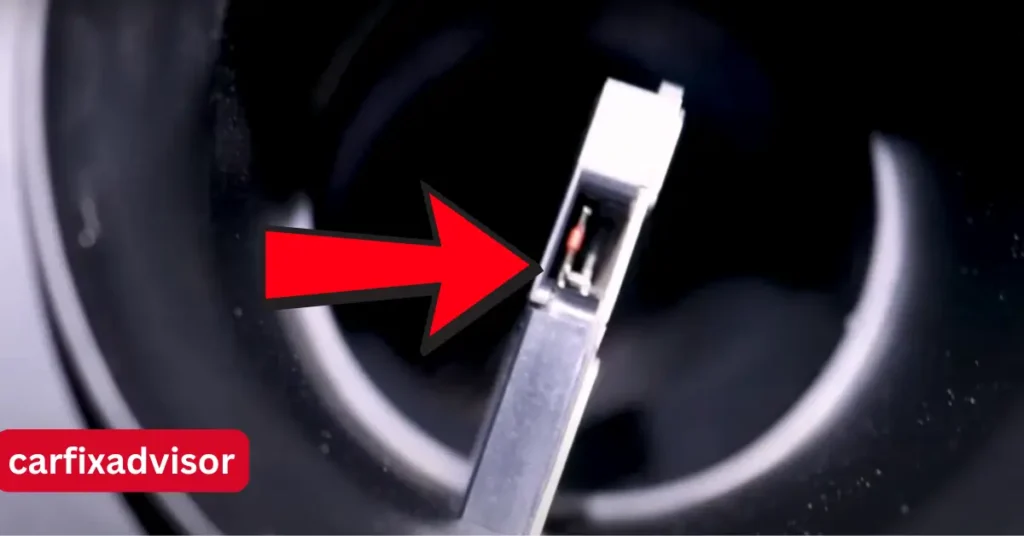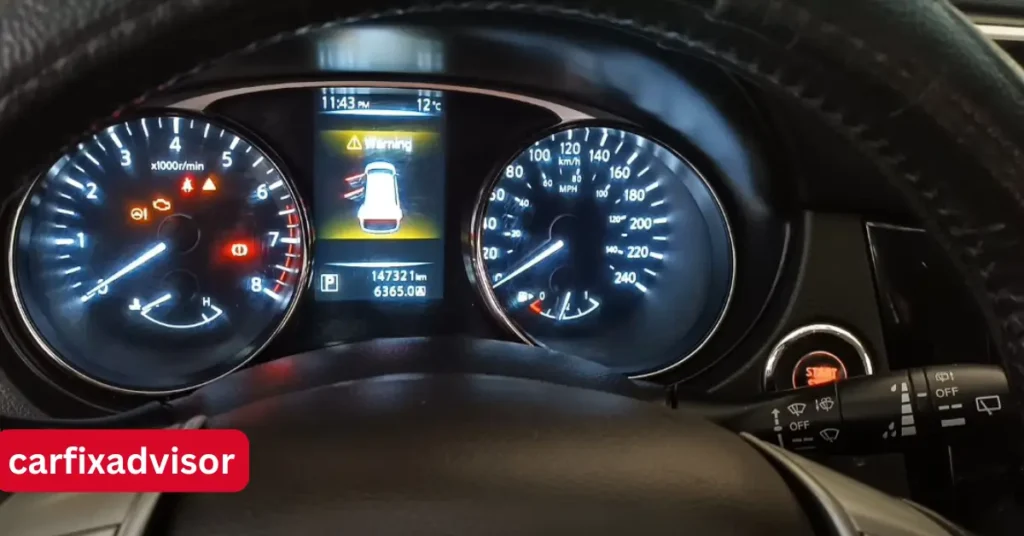Replacing Mass Air Flow sensor is a common repair for many car owners, particularly when they experience poor performance, rough idling, or a decrease in fuel efficiency. After installing a new MAF sensor, you would expect the Check Engine Light (CEL) to turn off, signaling that everything is functioning as it should. However, some car owners find that the engine light stays on, even after replacing the MAF sensor. This can be frustrating and confusing, especially when you’ve taken all the necessary steps to install the new part properly.
In this article, we’ll explore why the engine light might remain on after replacing the MAF sensor, what steps you can take to address the issue, and how to prevent future problems. Understanding why the check engine light stays on can help you get your car back to its optimal performance and prevent unnecessary repairs.
What is a Mass Air Flow Sensor?
Before we dive into the issue of the engine light staying on, let’s first take a moment to understand what a Mass Air Flow (MAF) sensor does in your vehicle.
The MAF sensor measures the amount of air entering the engine, which is essential for determining the correct amount of fuel to inject. The engine control unit (ECU) relies on this data to maintain the optimal air-fuel mixture for performance and efficiency. If the MAF sensor malfunctions, it can lead to various problems, such as poor fuel economy, rough idling, stalling, or even an engine misfire.
Replacing a faulty MAF sensor is crucial to maintaining the vehicle’s overall performance. However, simply replacing the sensor doesn’t always solve the problem, especially if the engine light doesn’t turn off afterward. Let’s explore why that happens.
 Engine Light Still On After Replacing Mass Air Flow Sensor
Engine Light Still On After Replacing Mass Air Flow Sensor
Common Causes of the Engine Light Staying On After Replacing Mass Air Flow Sensor
There are several reasons why the engine light might stay on after replacing the Replacing Mass Air Flow Sensor. These can range from simple installation mistakes to more complex issues related to the engine’s control system. Below, we will go over the most common causes.
1. Improper Installation of the New Replacing Mass Air Flow Sensor
One of the most common reasons for the engine light remaining on is improper installation. Even if you’ve purchased the correct replacement part, the sensor must be installed correctly. Here are some installation mistakes that could cause the CEL to stay on:
Loose connections: If the sensor is not properly connected to the wiring harness, the engine control unit (ECU) may not receive the correct data.
Incorrect sensor positioning: The MAF sensor needs to be correctly seated in the air intake. If it’s misaligned or improperly secured, it may not measure airflow accurately.
Damaged wiring: While replacing the MAF sensor, the wiring may have been damaged or disconnected. This can prevent the sensor from working properly.
To avoid these issues, double-check all the connections and ensure that the sensor is positioned and secured correctly.
2. Failure to Reset the ECU
The ECU (engine control unit) is responsible for managing your car’s engine settings, including the data received from the MAF sensor. When you replace the MAF sensor, the ECU needs to be updated to recognize the new sensor and reset its parameters accordingly.
If the ECU is not reset, it may continue to use the old sensor’s settings, causing the engine light to remain on. Some vehicles automatically reset the ECU after disconnecting the battery, but in other cases, the ECU may need to be manually reset using a diagnostic tool.
To reset the ECU, you can:
Disconnect the car battery: Removing the battery for 10-15 minutes allows the ECU to reset, clearing any stored trouble codes.
Use an OBDII scanner: An OBDII scanner can be used to clear any codes related to the MAF sensor. This tool can also help you check for any other underlying issues that might be triggering the CEL.
3. Faulty New Replacing Mass Air Flow Sensor
While rare, it’s possible that the replacement MAF sensor is defective right out of the box. Manufacturing defects can occur, and a faulty sensor will not send the correct data to the ECU, keeping the engine light on.
Before assuming that the sensor is faulty, check for any visible signs of damage, like cracks or broken connectors. If the sensor appears to be fine, but the engine light stays on, it might be worth returning the sensor and getting a replacement from the manufacturer or supplier.
4. Other Engine Components Affecting the Replacing Mass Air Flow Sensor
Sometimes, the issue may not be with the replacing mass air flow sensor at all. Other engine components can affect the operation of the replacing mass air flow sensor or cause similar symptoms. These could include:
Dirty air filters: A clogged or dirty air filter can restrict airflow to the engine, causing the replacing mass air flow sensor to read incorrectly. Check and replace the air filter if necessary.
Vacuum leaks: If there’s a vacuum leak in the intake system, it can cause an imbalance in the air-fuel mixture, leading to inaccurate readings from the MAF sensor.
Other sensor malfunctions: A malfunction in other sensors, like the oxygen sensor or throttle position sensor, can also cause the ECU to misinterpret data and keep the engine light on.
5. Unresolved Trouble Codes
When the MAF sensor is replaced, the vehicle’s ECU may still store old trouble codes in its memory. These codes could be related to the MAF sensor, but if not cleared, they might cause the engine light to remain illuminated.
Using an OBDII scanner can help clear any stored codes. However, it’s essential to ensure that the codes are fully resolved, not just hidden. If the root cause of the issue is not fixed, the engine light may come back on.
What to Do When the Engine Light Remains On
Now that we’ve discussed the possible reasons why the engine light stays on after replacing the replacing mass air flow sensor, here are the steps you can take to resolve the issue:
1. Double-Check the Installation
Start by ensuring that the new MAF sensor is installed correctly. This includes:
Checking the wiring harness for secure connections.
Verifying that the sensor is properly aligned and tightly secured.
Inspecting for any damage to the wiring or the sensor itself.
If you’re unsure of the installation, refer to your vehicle’s manual or consult a professional mechanic for assistance.
2. Reset the ECU
Resetting the ECU is a critical step after replacing the MAF sensor. Depending on your vehicle’s make and model, this may be done by disconnecting the battery for 10-15 minutes or using an OBDII scanner to manually clear the codes.
3. Scan for Other Codes
Use an OBDII scanner to check for additional error codes that might be related to other sensors or components. If the scanner identifies other issues, such as a faulty oxygen sensor or vacuum leak, address those problems to prevent the engine light from staying on.
4. Replacing Mass Air Flow Sensor Sensor if Necessary
If the engine light remains on despite your efforts to reset the ECU and check the installation, the new MAF sensor may be defective. In this case, consider replacing it with a new one from a different manufacturer or supplier.
 Engine Light Still On After Replacing Mass Air Flow Sensor
Engine Light Still On After Replacing Mass Air Flow Sensor
Additional Troubleshooting for Engine Light Staying On After Replacing the MAF Sensor
If you’ve followed all the steps to install the new MAF sensor, reset the ECU, and still find that the engine light remains on, there are a few more things to consider before calling it quits. While the previous steps cover the most common reasons, sometimes the issue could be deeper than a simple reset or installation error.
1. Check the MAF Sensor’s Calibration
In some cases, even after replacing the replacing mass air flow sensor, the vehicle’s ECU may still need additional calibration. Some newer cars or performance models might require specific calibration adjustments to adapt the ECU to the new sensor.
If the vehicle uses a digital replacing mass air flow sensor, it may need to be calibrated using specialized tools or a professional diagnostic machine. In some cases, an OBDII scanner may offer the option to calibrate the new MAF sensor, but for some vehicles, you may need to visit a dealership or a certified mechanic to perform this task.
2. Inspect the Air Intake System for Leaks
A vacuum or air intake leak can often cause the engine light to remain on after replacing the replacing mass air flow sensor. Even the slightest vacuum leak can lead to improper air-to-fuel ratios, causing the engine’s sensors to register incorrect readings.
Inspect the intake hoses, vacuum lines, and any other areas where air might be entering the system improperly. Look for visible cracks, loose fittings, or worn-out seals, and replace any damaged parts. Addressing intake leaks can sometimes fix the issue and turn off the engine light.
3. Look Into the Fuel System
Another possible cause of the engine light staying on is related to the fuel system. Problems with the fuel injectors, fuel pressure regulator, or even fuel contamination can interfere with the engine’s ability to use the data from the MAF sensor properly. In this case, the ECU might continuously register errors, even after replacing the replacing mass air flow sensor.
It’s a good idea to check the fuel system to ensure that it’s working as intended. You can do this by running a fuel system diagnostic test or by consulting a professional to inspect components such as the fuel injectors and fuel pressure.
4. Potential Wiring Issues
If there is a problem with the wiring harness that connects the replacing mass air flow sensor to the ECU, it may not send proper signals to the engine control unit, causing the engine light to stay on. Over time, wires can wear out or become corroded, especially in areas with high heat or exposure to weather.
Check the wiring carefully for any signs of wear, fraying, or corrosion, especially at the connectors. If necessary, replace any damaged wiring to ensure proper communication between the sensor and the ECU.
When to Seek Professional Help
At this point, if the engine light still won’t turn off, it might be time to consult a professional mechanic. Sometimes, the issue may go beyond the replacing mass air flow sensor itself, requiring a more in-depth diagnosis. A certified technician can perform advanced tests using specialized diagnostic equipment to identify hidden problems that may not be visible through regular OBDII scans.
Here are a few signs that you may need professional assistance:
Persistent Engine Light: If the engine light stays on despite all your troubleshooting efforts, it may be time to seek a second opinion.
Unusual Symptoms: If the vehicle exhibits additional issues such as rough idling, poor acceleration, or stalling, these could indicate more complex problems.
Diagnostic Tools: A mechanic has access to advanced diagnostic tools and scanners that can perform more in-depth analysis than typical OBDII scanners.
A professional mechanic will also have the experience and knowledge to fix wiring issues, perform sensor calibration, and check for underlying problems in the engine or other vital systems.
Preventing Future Issues with the Replacing Mass air Flow Sensor
Once you’ve resolved the issue and the engine light has turned off, it’s important to take steps to prevent future MAF sensor problems. Here are a few tips to help extend the lifespan of your new replacing mass air flow sensor and keep your engine running smoothly:
1. Regularly Clean the MAF Sensor
Over time, dust and debris can accumulate on the MAF sensor, affecting its accuracy. Cleaning the sensor periodically can prevent buildup and ensure it continues to function properly. When cleaning the sensor, use an appropriate MAF sensor cleaner and avoid touching the sensor’s sensitive elements.
2. Replace the Air Filter Regularly
A clogged or dirty air filter can restrict airflow to the engine, causing inaccurate readings from the MAF sensor. To avoid this, replace your vehicle’s air filter regularly and inspect it for signs of damage or contamination.
3. Inspect and Maintain the Intake System
The air intake system plays a crucial role in the performance of the MAF sensor. Make sure the intake system is free of leaks and cracks, as even small leaks can affect sensor readings. Regularly inspect the intake system for any wear and tear.
4. Follow Manufacturer Recommendations for Maintenance
To prevent further sensor issues, it’s essential to follow your vehicle manufacturer’s recommended maintenance schedule. This includes not only the MAF sensor but also the associated components like fuel injectors, filters, and other sensors that help maintain optimal performance.
Conclusion: Engine Light Still On After Replacing Mass Air Flow Sensor
Replacing mass air flow sensor is often an effective way to restore your vehicle’s performance and fix issues like rough idling, poor fuel economy, and stalling. However, the engine light staying on after replacing the MAF sensor can be frustrating. By understanding the common causes of this issue and following the troubleshooting steps outlined in this article, you can often resolve the problem on your own.
If the engine light persists despite your efforts, don’t hesitate to consult a professional mechanic who can diagnose the issue more thoroughly. Regular maintenance and careful installation are key to ensuring your MAF sensor continues to function properly, helping your vehicle maintain its performance and efficiency.
